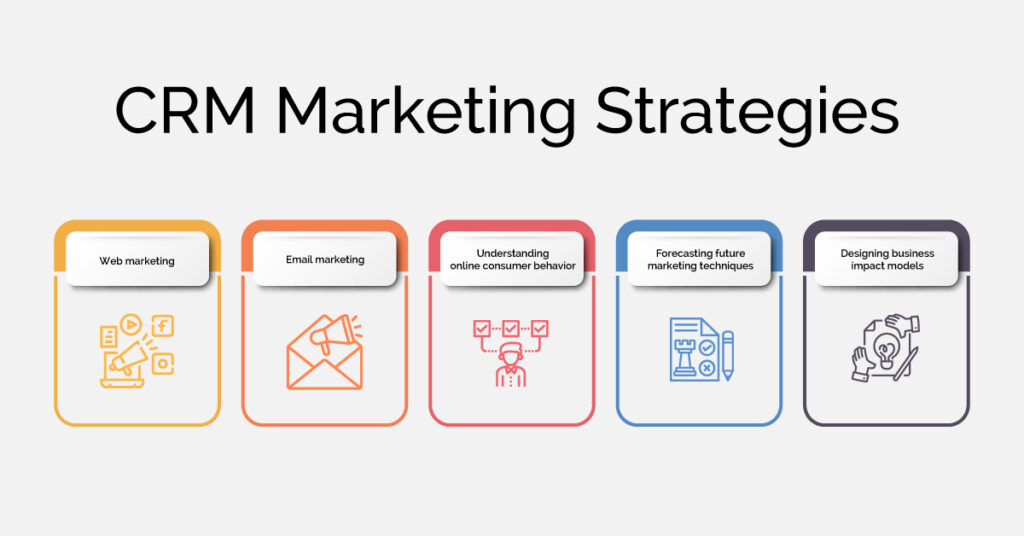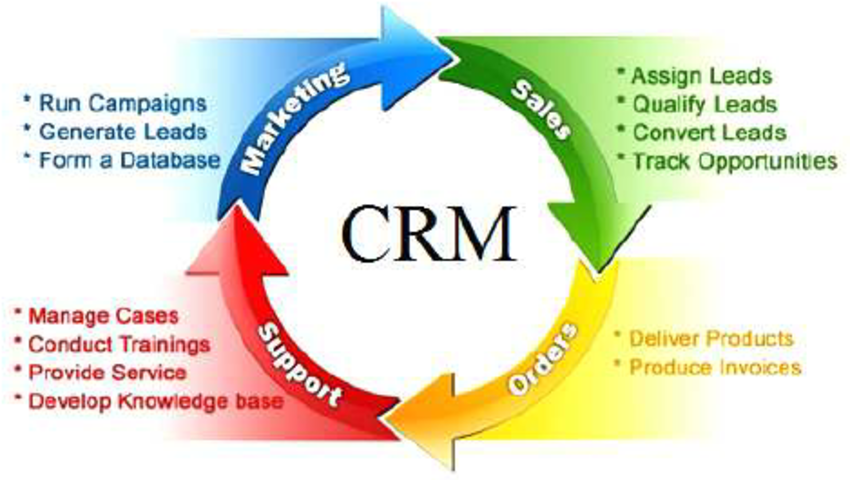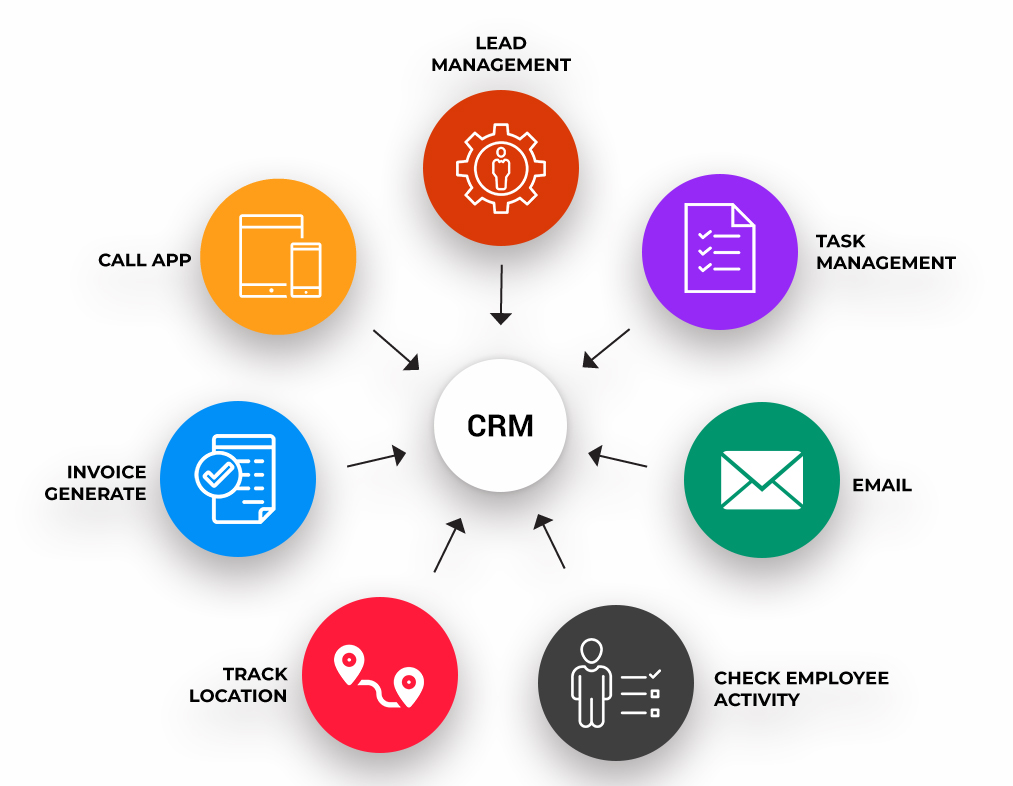In the ever-evolving landscape of digital marketing, Customer Relationship Management (CRM) has emerged as a cornerstone for businesses striving to build lasting customer relationships and drive sustainable growth. But simply implementing a CRM system isn’t enough. To truly harness its power, you need to understand and meticulously track key CRM marketing metrics. These metrics act as your compass, guiding you through the complexities of customer behavior, campaign performance, and overall business health. This comprehensive guide will delve into the essential CRM marketing metrics, providing you with the knowledge and tools to optimize your strategies, measure your success, and ultimately, achieve your marketing goals.
Why CRM Marketing Metrics Matter
Before we dive into the specifics, let’s address the fundamental question: why are CRM marketing metrics so crucial? The answer lies in their ability to provide a data-driven understanding of your marketing efforts. Without these metrics, you’re essentially navigating in the dark, relying on guesswork and intuition rather than concrete evidence. Here’s why tracking CRM marketing metrics is essential:
- Measure Campaign Effectiveness: Metrics allow you to gauge the performance of your marketing campaigns, identifying what’s working and what’s not. This enables you to make informed decisions about resource allocation and campaign optimization.
- Understand Customer Behavior: By analyzing metrics related to customer interactions, you gain valuable insights into their preferences, needs, and pain points. This understanding allows you to tailor your marketing messages and offers for maximum impact.
- Improve Customer Retention: Metrics related to customer churn and lifetime value help you identify at-risk customers and implement strategies to retain them, ultimately boosting your bottom line.
- Optimize Sales Processes: CRM metrics provide visibility into the sales pipeline, allowing you to identify bottlenecks, improve lead conversion rates, and streamline your sales processes.
- Demonstrate ROI: By tracking key metrics, you can quantify the return on investment (ROI) of your marketing efforts, providing tangible evidence of your team’s contributions to the business.
Key CRM Marketing Metrics to Track
Now, let’s explore the specific CRM marketing metrics that you should be tracking. These metrics can be broadly categorized into several key areas, each providing valuable insights into different aspects of your marketing performance.
Customer Acquisition Metrics
Acquiring new customers is the lifeblood of any business. Tracking these metrics will help you understand the efficiency and effectiveness of your acquisition efforts.
- Cost Per Acquisition (CPA): This metric measures the total cost of acquiring a new customer. It’s calculated by dividing your total marketing spend by the number of new customers acquired. A lower CPA indicates a more efficient acquisition strategy.
- Customer Acquisition Cost (CAC): Similar to CPA, CAC focuses specifically on the cost associated with acquiring a new customer. This typically includes marketing and sales expenses.
- Conversion Rate: This metric measures the percentage of leads that convert into paying customers. It’s a critical indicator of the effectiveness of your sales and marketing funnel.
- Lead Conversion Rate: Specifically, this metric looks at the percentage of leads that convert into opportunities or qualified prospects.
- Website Traffic to Lead Ratio: This metric gauges how effectively your website converts visitors into leads. It’s calculated by dividing the number of leads generated by your website traffic.
- Marketing Qualified Leads (MQLs) to Sales Qualified Leads (SQLs) Ratio: This ratio indicates how well your marketing efforts are generating qualified leads that are ready for the sales team.
Customer Engagement Metrics
Once you’ve acquired customers, keeping them engaged is paramount. These metrics help you understand how customers interact with your brand and products.
- Customer Engagement Score: This score is a composite metric that reflects the level of customer interaction with your brand. It can be based on various factors, such as website visits, email opens, social media interactions, and purchase history.
- Email Open Rate: This metric measures the percentage of emails that are opened by recipients. It’s a key indicator of the effectiveness of your email subject lines and content.
- Click-Through Rate (CTR): This metric measures the percentage of recipients who click on links within your emails or other marketing materials. It indicates the relevance and appeal of your content.
- Website Bounce Rate: This metric measures the percentage of visitors who leave your website after viewing only one page. A high bounce rate can indicate that your website is not engaging or that your content is not relevant to visitors.
- Time on Page: This metric measures the average amount of time visitors spend on a specific page of your website. It’s an indicator of content engagement and relevance.
- Social Media Engagement Rate: This metric measures the level of interaction your content receives on social media platforms, including likes, shares, comments, and follows.
Customer Retention Metrics
Retaining existing customers is often more cost-effective than acquiring new ones. These metrics help you understand customer loyalty and identify opportunities to improve retention rates.
- Customer Retention Rate: This metric measures the percentage of customers who remain active over a specific period. A high retention rate indicates strong customer loyalty.
- Churn Rate: This metric measures the percentage of customers who stop doing business with you over a specific period. A low churn rate is essential for sustainable growth.
- Customer Lifetime Value (CLTV): This metric estimates the total revenue a customer is expected to generate throughout their relationship with your business. It’s a crucial indicator of long-term profitability.
- Repeat Purchase Rate: This metric measures the percentage of customers who make repeat purchases. It indicates customer satisfaction and loyalty.
- Net Promoter Score (NPS): This metric measures customer loyalty and their willingness to recommend your brand to others. It’s calculated by asking customers how likely they are to recommend your company on a scale of 0 to 10.
- Customer Satisfaction Score (CSAT): This metric measures customer satisfaction with a specific product, service, or interaction. It’s often measured through post-interaction surveys.
Sales Performance Metrics
CRM systems are often closely integrated with sales processes. These metrics help you assess the effectiveness of your sales team and the overall sales pipeline.
- Sales Conversion Rate: This metric measures the percentage of leads that convert into sales. It’s a key indicator of sales effectiveness.
- Average Deal Size: This metric measures the average value of a closed deal. It’s important for understanding revenue potential.
- Sales Cycle Length: This metric measures the average time it takes to close a deal. A shorter sales cycle can indicate a more efficient sales process.
- Opportunity Win Rate: This metric measures the percentage of sales opportunities that are won. It’s an indicator of sales team performance.
- Revenue per Sales Rep: This metric measures the average revenue generated by each sales representative.
- Lead Response Time: This metric measures the time it takes for a sales representative to respond to a new lead. A quick response time can improve lead conversion rates.
Marketing Campaign Metrics
These metrics are crucial for evaluating the success of your individual marketing campaigns and understanding their impact on overall business goals.
- Campaign ROI: This metric measures the return on investment for a specific marketing campaign. It’s calculated by dividing the revenue generated by the campaign by the campaign’s cost.
- Cost Per Lead (CPL): This metric measures the cost of generating a lead through a specific marketing campaign.
- Website Traffic from Campaigns: This metric tracks the amount of traffic generated to your website from your marketing campaigns.
- Conversion Rate by Campaign: This metric measures the percentage of visitors who convert into customers as a result of a specific marketing campaign.
- Attribution Modeling: This helps understand which marketing touchpoints contributed to a conversion. Different attribution models (e.g., first-touch, last-touch, multi-touch) can be used.
How to Track and Analyze CRM Marketing Metrics
Now that you know which metrics to track, the next step is to understand how to track and analyze them effectively. Here’s a step-by-step guide:
- Choose the Right CRM System: Selecting a CRM system that aligns with your business needs is the foundation for effective metric tracking. Consider factors such as scalability, integrations, reporting capabilities, and user-friendliness. Popular CRM platforms include Salesforce, HubSpot, Zoho CRM, and Microsoft Dynamics 365.
- Define Your Goals and Objectives: Before you start tracking metrics, clearly define your marketing goals and objectives. What are you trying to achieve? Are you aiming to increase lead generation, improve customer retention, or boost sales? Your goals will determine which metrics are most relevant to track.
- Set Up Your CRM Dashboard: Customize your CRM dashboard to display the key metrics that are most important to your business. This will provide a centralized view of your marketing performance. Most CRM systems offer customizable dashboards, allowing you to drag and drop widgets to display the metrics you want to track.
- Integrate with Other Marketing Tools: Integrate your CRM system with other marketing tools, such as your email marketing platform, website analytics platform, and social media management tools. This will allow you to collect data from various sources and gain a more comprehensive view of your marketing performance.
- Collect Data Consistently: Ensure that you collect data consistently and accurately. This involves training your team on how to use the CRM system and other marketing tools, and establishing clear processes for data entry and management.
- Analyze Your Data Regularly: Set aside time regularly to analyze your CRM marketing data. Look for trends, patterns, and insights that can help you optimize your marketing strategies. Use data visualization tools, such as charts and graphs, to make your data easier to understand.
- Take Action Based on Your Findings: The most important step is to take action based on your data analysis. Use the insights you gain to make informed decisions about your marketing campaigns, sales processes, and customer interactions. Experiment with different strategies and track the results to continuously improve your performance.
- Automate Reporting: Automate your reporting processes to save time and ensure consistency. Most CRM systems offer automated reporting capabilities, allowing you to schedule reports to be sent to your team on a regular basis.
- Use Data Visualization: Employ data visualization techniques like charts and graphs. This helps in quickly identifying trends and outliers in your data, making it easier to understand complex information at a glance.
- Regularly Review and Refine: Regularly review the metrics you are tracking and refine your approach as needed. Your business needs and marketing strategies will evolve over time, so it’s important to adapt your metrics accordingly.
Best Practices for Using CRM Marketing Metrics
To maximize the value of your CRM marketing metrics, consider these best practices:
- Focus on Actionable Metrics: Prioritize metrics that provide actionable insights and can inform your decision-making. Avoid tracking metrics that are interesting but don’t contribute to your business goals.
- Set Benchmarks and Track Progress: Establish benchmarks for your key metrics and track your progress over time. This will help you identify areas for improvement and measure the effectiveness of your strategies.
- Segment Your Data: Segment your data by customer demographics, behavior, and other relevant factors. This will allow you to gain a deeper understanding of your customers and tailor your marketing efforts accordingly.
- Use A/B Testing: Conduct A/B tests to experiment with different marketing strategies and optimize your campaigns. This involves testing two versions of a marketing asset (e.g., an email subject line or a landing page) to see which one performs better.
- Foster Collaboration: Encourage collaboration between your marketing, sales, and customer service teams. Share your CRM marketing data with all relevant stakeholders to ensure everyone is aligned and working towards the same goals.
- Train Your Team: Provide adequate training to your team on how to use your CRM system and analyze the data. This ensures they are equipped to make data-driven decisions.
- Ensure Data Quality: Maintain data quality to ensure the accuracy of your metrics. Regularly audit your data and correct any errors or inconsistencies.
- Stay Updated: The marketing landscape is always changing. Stay informed about the latest trends and technologies to adapt your strategy and make the most of your CRM system.
- Regularly Review and Adjust: CRM marketing is not a set-it-and-forget-it process. Regularly review your metrics, analyze trends, and adjust your strategies based on the insights you gain.
Common Pitfalls to Avoid
While CRM marketing metrics offer immense value, there are some common pitfalls to avoid:
- Tracking Too Many Metrics: Overwhelmed by data? Focusing on too many metrics can lead to analysis paralysis. Stick to the metrics that matter most to your business goals.
- Ignoring Data Quality: Garbage in, garbage out. Inaccurate or incomplete data will lead to flawed insights. Implement data validation and cleansing procedures.
- Lack of Action: Collecting data without taking action is pointless. Use your insights to improve your strategies and processes.
- Focusing Solely on Vanity Metrics: Metrics like social media followers can be misleading if they don’t translate into tangible results. Prioritize metrics that reflect business outcomes.
- Not Aligning with Business Goals: Ensure your metrics are aligned with your overall business objectives. If your goal is to increase revenue, your metrics should reflect that focus.
- Neglecting Customer Feedback: While metrics provide quantitative data, don’t ignore qualitative feedback from your customers. Combine both to gain a comprehensive understanding.
- Failing to Adapt: The marketing environment is constantly evolving. Ensure you regularly review and update your metrics to remain relevant.
The Future of CRM Marketing Metrics
The world of CRM marketing is constantly evolving, and so are the metrics used to measure its success. Here are some trends to watch:
- AI-Powered Analytics: Artificial intelligence (AI) is playing an increasingly important role in CRM marketing. AI-powered analytics can automate data analysis, identify patterns, and provide predictive insights.
- Personalization at Scale: With the rise of AI and machine learning, CRM systems are becoming more adept at personalizing marketing messages and offers at scale.
- Focus on Customer Experience: The customer experience is becoming increasingly important. Expect to see more metrics focused on measuring and improving the customer journey.
- Integration of Data Sources: CRM systems are integrating with more data sources, such as social media platforms, e-commerce platforms, and customer service systems. This will provide a more holistic view of the customer.
- Emphasis on Privacy and Compliance: Data privacy regulations, such as GDPR and CCPA, are becoming more stringent. Expect to see more emphasis on data privacy and compliance in CRM marketing.
Conclusion
CRM marketing metrics are the lifeblood of data-driven marketing. By carefully selecting, tracking, and analyzing these metrics, you can gain a deeper understanding of your customers, optimize your marketing campaigns, improve your sales processes, and ultimately, drive sustainable growth. Remember to choose the right CRM system, define your goals, collect data consistently, and take action based on your findings. Embrace the best practices outlined in this guide, avoid common pitfalls, and stay ahead of the curve by embracing emerging trends. With a data-driven approach, you can unlock the full potential of your CRM system and achieve remarkable results.
By consistently monitoring and analyzing these metrics, you’ll not only be able to measure the success of your marketing efforts but also gain invaluable insights into your customers’ behavior and preferences. This knowledge empowers you to refine your strategies, personalize your communications, and ultimately, build stronger, more profitable customer relationships. So, embrace the power of CRM marketing metrics and watch your business thrive!


